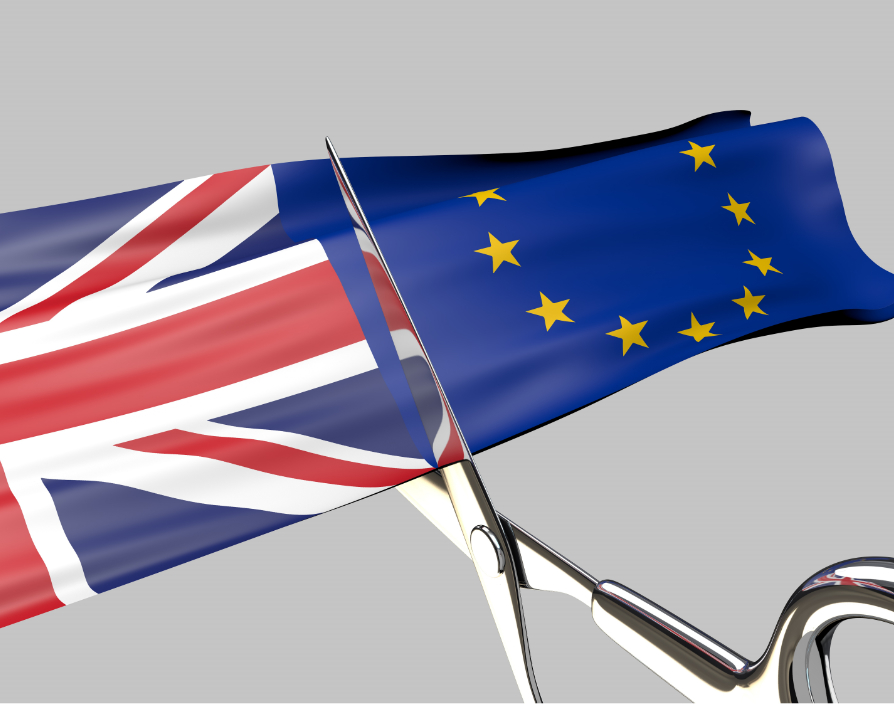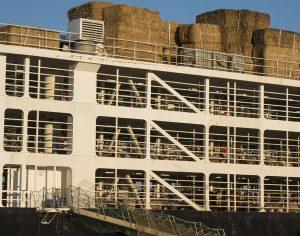With the final act of Brexit looming later this year, customs expert Arne Mielken explains there are big changes ahead for those UK companies who only currently trade with EU businesses.
When the UK finally cuts its ties with the European Union, after more than four and a half years of bitter wrangling, one particular document will be more important than all the others. It’s called a Customs Declaration, and anyone who owns a business which imports and/or exports goods between the UK and Europe, will need to familiarise themselves with it as soon as possible.
Put simply, the Customs Declaration is an official document that lists and provides details of all goods that are imported and exported to, or from, the UK. And anyone who trades outside of a single market, or a customs union, will need to use one. This particular form is the means by which UK authorities keep a record of all trade, whether coming in or going out. Authorities need to control and keep a check on the flow of goods, making certain they are safe and that the correct fees are being paid.
From the start of 2021, the Customs Declaration document will have to be used when the UK does business with the countries it has left behind in the EU. These rules will come into force in less than 100 days, when Great Britain leaves the EU, and Northern Ireland becomes part of the UK’s Customs Union.
Some businesses, which already trade with non-EU countries around the globe, will know exactly what a Customs Declaration document is. But those who have only ever traded with companies based in EU countries will need to get up to speed fast regarding this vital piece of legislation ‘ and the clock is ticking.
Controlling the border is essential
All nations need to maintain a check on which goods are physically entering their country. They must be aware of what’s coming in and what’s going out. It’s vital that Her Majesty’s Revenue and Customs (HMRC) prevent illegal and/or dangerous goods from entering the UK. They need to check for items such as illegal drugs, suspicious foods, explosives or even large amounts of cash.
Customs departments exist to ensure the safety of the nation’s citizens, by identifying unsafe products and preventing them from entering the country. This could be contaminated food or potentially dangerous electrical appliances. They also need to detect illegal animal and plant trade, or check for smuggled art treasures.
With regards to exports, customs officers need to apply similar diligence. For example, they must try to stop goods from leaving the UK’s shores which could be used to make nuclear or chemical weapons. All items leaving the UK must have a legitimate purpose and be travelling to an appropriate destination.
Last, but not least, they must administer the correct collection of duties, while identifying any suspicious or fraudulent activity. Knowing what’s coming in is essential for monitoring compliance with trade restrictions and embargoes. As you can see, this is a long list of tasks for customs officials to adhere to and the responsibility is immense.
To break this down into easily understood points, this is the information HMRC needs to gather every single day:
1: WHO is importing or exporting, sending and receiving?
2: WHAT is being traded, as per the official commodity code?
3: WHY is it being moved?
4: HOW MUCH of it is either entering or leaving (quantity, weight, value)?
5: HOW is it being transported (train, truck, plane, vessel, spaceship ‘ just kidding)?
6: WHICH goods require licences?
7: WHERE are they arriving from and where are they going?
How should a Customs Declaration be lodged?
In the UK, we currently submit our declarations electronically using a system called CHIEF (Customs Handling of Import and Export Freight), which will soon be replaced by the new Customs Declaration Service (CDS). This is usually inputted by the agent you appoint. The template that this system uses is based on the so-called Single Administrative Document (SAD) or document C88. That was the old paper copy before such tasks were carried out digitally online.
How many boxes do I need to fill out on the document?
There are more than 50 boxes in a typical Customs Declaration. The information which HMRC needs will vary and often depend on answers already submitted earlier in the document. Some boxes are not even used at all. We, at Customs Manager, have produced a handy guide to help you complete this document. Click here to find out more.
What are the most common errors that occur when completing a Customs Declaration document?
Care must be taken when completing one of these forms. The mistyping of words or numbers, whether it is a committed code or a customs procedure code, can render an entire declaration invalid. We see errors in many different ways, such as incorrect number of items, wrong currency or false country codes. Sometimes there is a mix-up between country of origin and country of dispatch. It’s crucial to double check the information you are submitting. Also make sure that where a licence is required, you declare that, too.
Where can I find the rules which govern a Customs Declaration?
Here are links to some not-very-light reading topics! But which still need to be understood.
The overall UK’s standalone customs regime is the Taxation (Cross-border Trade) Bill. It is largely based on EU law. In some circumstances, you can carry on operating in much the same way as you do now. But there are also quite a few differences, which need to be digested and appreciated.
For example, the UK will operate a new UK Global Tariff. This is the go-to destination for checking which tariffs apply to which goods (from 1st, January 2021).
For details on how the new customs rules are implemented, take a look at statutory instruments. But, be warned, they are tedious to read and extremely heavy going.
For granular details on how to complete a Customs Declaration form, you will need to read Volume 3 of the current UK Trade Tariff.
Conclusion
Customs declarations will be a reality for all EU and UK businesses wishing to trade with each other, and there are several million of them. Understanding how to complete these forms is not optional, but mandatory. Now is the time to get to grips on understanding them, while training staff to make sense of them. Help is widely available and should be leveraged wherever possible. But, be quick, time is running out swiftly.
“
Share via:


















































